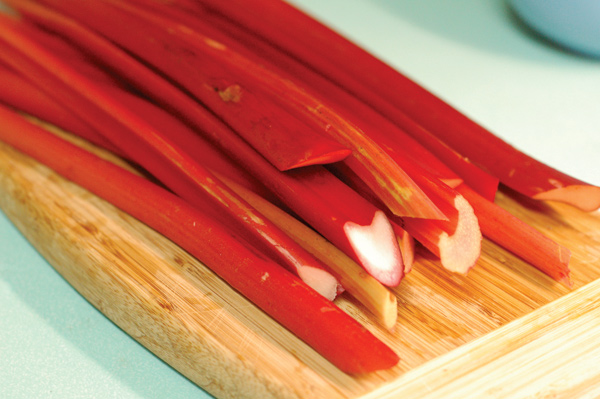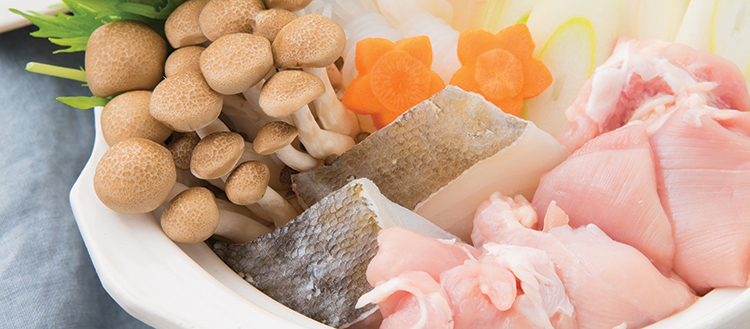 recipes and photo by Marisa McClellan (foodinjars.com) Come spring, we local eaters are deeply hungry for regionally-grown produce beyond cold-loving Brussels sprouts and storage apples, potatoes and onions. Sadly, with a stinging chill remaining in the air, summer berries, stone fruit and corn (oh corn!) are still a long way away. Happily, there’s one plant that starts appearing earlier than all the rest, and with its brilliant color and tart flavor, it will give your taste buds the zing they’ve been longing for.
recipes and photo by Marisa McClellan (foodinjars.com) Come spring, we local eaters are deeply hungry for regionally-grown produce beyond cold-loving Brussels sprouts and storage apples, potatoes and onions. Sadly, with a stinging chill remaining in the air, summer berries, stone fruit and corn (oh corn!) are still a long way away. Happily, there’s one plant that starts appearing earlier than all the rest, and with its brilliant color and tart flavor, it will give your taste buds the zing they’ve been longing for.
Rhubarb typically appears in April, unfurling wide leaves as the stalks grow tall. It comes in hues ranging from a rosy green all the way to vivid crimson (hothouse rhubarb is typically darker in color than its outdoor cousins). Take care to avoid the leaves—they’re toxic when ingested. Most sellers trim the stalks before bringing their rhubarb to market, so it’s rare to encounter the leaves.
One particular pleasure of rhubarb is that it is tremendously versatile. It can bring a delicate tanginess to a main dish, be roasted down into a juicy, tart compote (perfect for stirring into yogurts or piling on toast) or be simmered with sugar and water into a bright, flavorful syrup (drizzled into sparkling water, it’s the ideal springtime cooler).
Roasted Rhubarb Compote
1 pound of rhubarb, cut into 2-3 inch lengths
½ cup maple sugar
1 orange, zested and juiced
2 tbsp. butter
Preheat oven to 300 degrees. Combine rhubarb, maple sugar, orange zest and juice in a large mixing bowl. Toss to combine.
Butter a large baking dish and pour the rhubarb into it, arranging the pieces to lie in a single layer.
Roast for 15 to 20 minutes, until the rhubarb pieces are tender. Serve over ice cream, stirred into yogurt or spooned onto toast.
Rhubarb Syrup
2 ½ cups chopped rhubarb
1 ½ cups sugar
1 cup water
Combine all the ingredients in a saucepan. Bring to a simmer over medium-high heat and cook for approximately 10 minutes, until the rhubarb has slumped and released its color into the water and sugar. Remove from heat.
Line a fine mesh strainer with cheesecloth and place it over a bowl. Pour the cooked rhubarb into the cheesecloth—the syrup will run into the bowl below and the solids will remain in the strainer.
After letting it strain for 15 minutes, gather up the corners of the cheesecloth to create a bundle of rhubarb solids. Give it a gentle squeeze, working the last drops of syrup into the bowl. Discard the cheesecloth bundle.
Allow the syrup to cool for an hour prior to use. Store in a resealable jar or bottle; keep refrigerated.
Pork Tenderloin and Rhubarb Sauce
1 pork tenderloin, cleaned of any silver skin
4 tbsp. olive oil, divided
2 cups chopped rhubarb (approximately 4-5 stalks)
1 ½ cups chopped red onion
¼ cup brown sugar
¼ cup apple cider vinegar
salt and pepper
Preheat your oven to 400 degrees. Heat two tablespoons of olive oil in a large, oven-proof skillet over high heat. Season your pork tenderloin (Meadow Run Farms sells a particularly good one) with salt and pepper. Place the tenderloin in the skillet and brown on all sides. Once it’s browned, place the pan in the oven and cook 10 to 12 minutes, until the internal temperature reaches 150 degrees.
Heat the remaining two tablespoons of oil in another skillet over medium-high heat. Add onions and cook for four to five minutes, until they’ve begun to brown. Add the chopped rhubarb and stir to combine. Add the vinegar and sugar, and stir until the sugar is dissolved. Reduce heat to medium and let cook until it relaxes into a chunky sauce, stirring frequently. Add a splash of water if it appears to be thickening too quickly (it will thicken further once it’s removed from the heat).
Remove the tenderloin from the oven and, using tongs, place it on a cutting board. Tent with foil and let rest for five to 10 minutes (internal temperature will climb an additional five to 10 degrees during resting). Slice into medallions and serve with the rhubarb sauce spooned on top.
This sauce also pairs well with pan roasted chicken.





Wonderful post… Very informational and educational as usual!
Acai Optimum